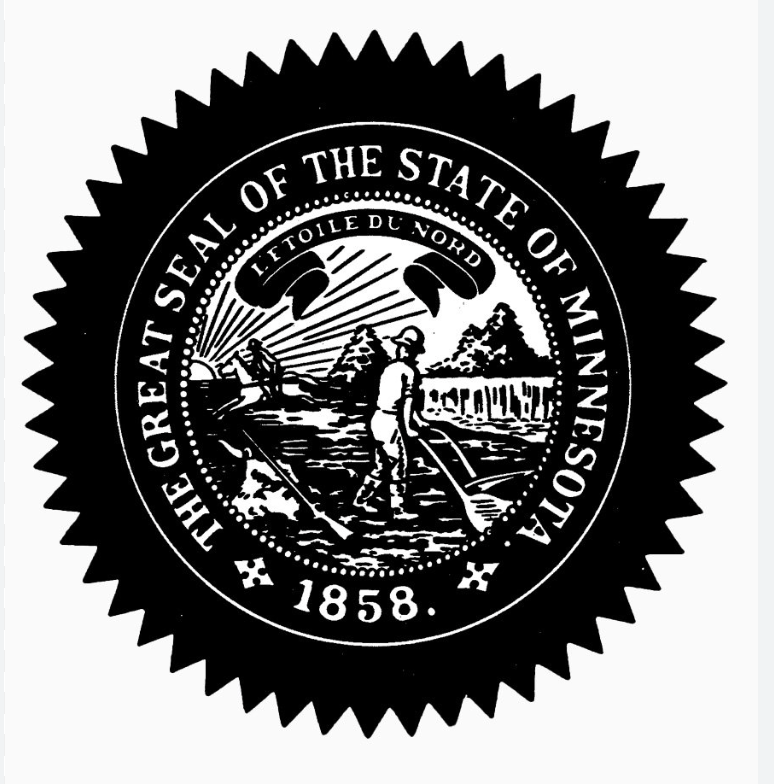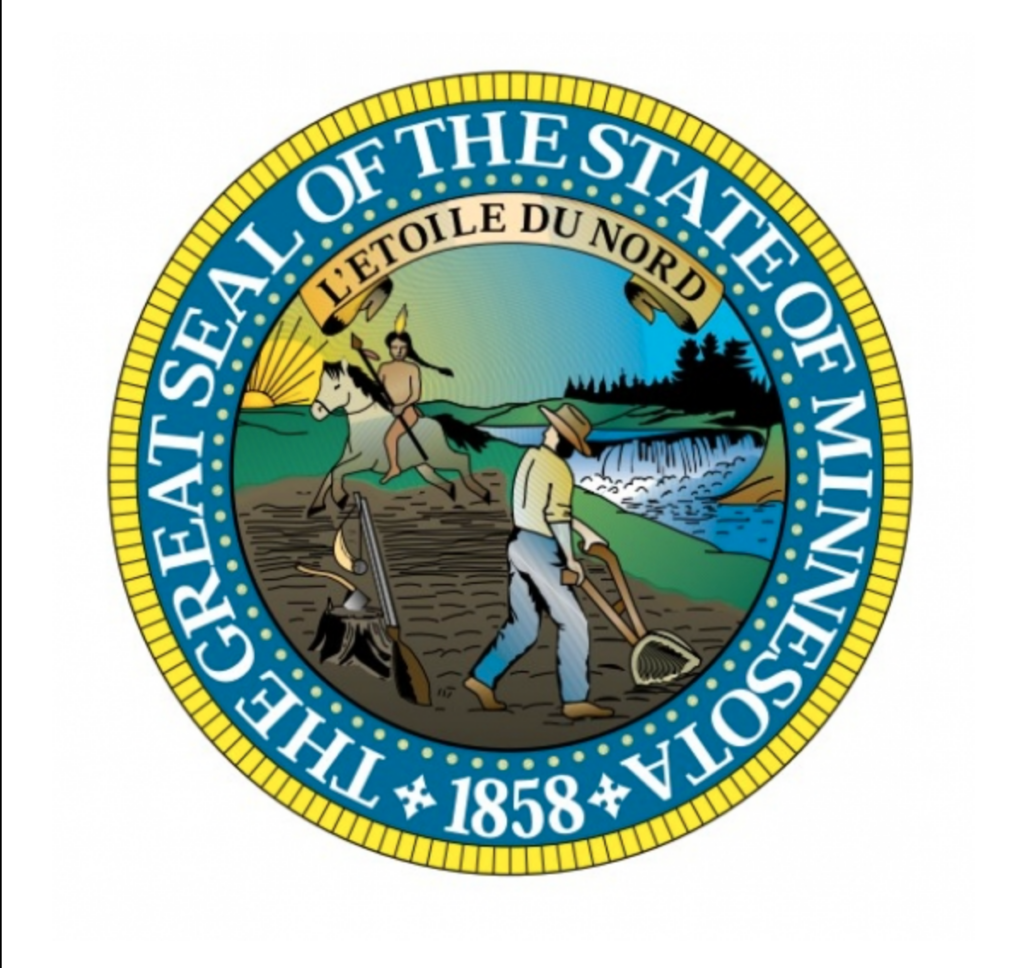Current flag redesign based on false narrative
The 2023 legislature set up a 13-member commission to redesign the Minnesota state flag and seal based on the false narrative that the design depicts a Native American on horseback riding away towards the setting sun. The whole premise of the redesign is that the current flag and seal are racist.
Rep. Mike Freiberg (DFL-Golden Valley), who authored the bill to change the flag called the current design “genocidal toward Native Americans.”
A Minnpost article from February titled “Let’s talk about our racist state flag” called the current flag “the functional equivalent of a stadium crowd doing the tomahawk chop.”
Native American artist Kathryn Moore wrote this week that the current seal tells a bad story: “The Native American on horseback — riding away with the setting sun — tells a story that celebrates Native displacement and promotes white racial superiority.”
But according to the Minnesota Historical Society, the “racism” of the original state seal has been removed with each of its two subsequent revisions.
The original territorial seal does include a Native American on horseback riding west into the setting sun, a clear depiction of their displacement to reservations in Southwestern Minnesota and South Dakota.

The seal was updated in 1971 and the Indian on horseback was replaced with a white settler simply riding westward. This version was never approved by the legislature.

In 1983 the legislature returned the Native American to the design but changed the direction and meaning of his gallop. According to MN Statutes 1.135:
Subd. 5.Historical symbolism of seal.
The sun, visible on the western horizon, signifies summer in the northern hemisphere. The horizon’s visibility signifies the flat plains covering much of Minnesota. The Indian on horseback is riding due south and represents the great Indian heritage of Minnesota. The Indian’s horse and spear and the Pioneer’s ax, rifle, and plow represent tools that were used for hunting and labor. The stump symbolizes the importance of the lumber industry in Minnesota’s history. The Mississippi River and St. Anthony Falls are depicted to note the importance of these resources in transportation and industry. The cultivated ground and the plow symbolize the importance of agriculture in Minnesota. Beyond the falls three pine trees represent the state tree and the three great pine regions of Minnesota; the St. Croix, Mississippi, and Lake Superior.

According to state law, the Indian on horseback is riding due south, not “away” and not into the sun. The entire narrative of the racist Minnesota seal falls apart with the 1983 revision and current state law! It’s almost like the narrative is more important than the facts.